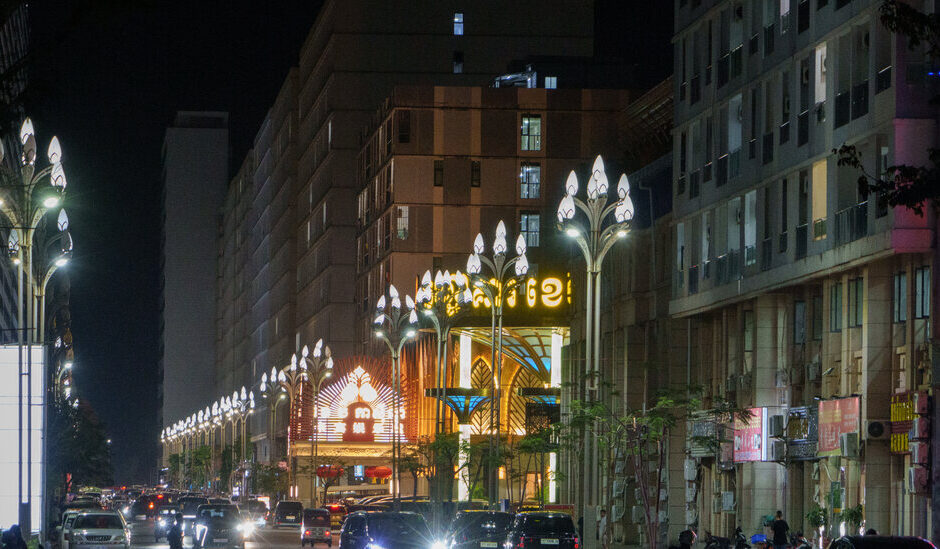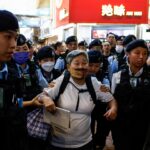Times Insider explains who we are and what we do and delivers behind-the-scenes insights into how our journalism comes together.
For months, Selam Gebrekidan, an investigative reporter for The New York Times, would stare at a maze of handwritten diagrams, drawings and charts on a wall inside her Hong Kong apartment. She was trying to piece together how exactly one of the world’s biggest money laundering networks operates.
“I needed a visual aid as I was breaking it down into steps,” she explained. Her effort was put to good use: This month, Ms. Gebrekidan and Joy Dong, a reporter-researcher who covers China for The Times, published a complex investigation that provides an inside look at how some scammers launder money and get away with it. For their article, Ms. Gebrekidan and Ms. Dong spoke to nearly a half-dozen scammers and their launderers, and then described each step of the laundering process.
“We wanted to make the story accessible for readers,” Ms. Gebrekidan said of the investigation, which focuses on a single laundering network in Southeast Asia. “But first we had to understand the complexities ourselves.”
In a video call from Hong Kong, Ms. Gebrekidan and Ms. Dong discussed interviewing the scammers and money launderers for their article and the questions still top of mind for them. These are edited excerpts from the conversation.
What initially led you to pursue this story?
SELAM GEBREKIDAN I started looking into money laundering broadly about nine months ago. Joy and I wanted to understand how the criminal underworld works.
We had received tips that the city of Sihanoukville, Cambodia, like a number of other casino hubs in that region, was a hot spot for scamming and money laundering, especially after the pandemic. When I visited, I was struck by the number of unfinished buildings on every street. The upper floors in these empty buildings had fluorescent lights on, all night long. I kept thinking: Who is up there? And what are they doing?
It took us a while to gain people’s trust, but then, in January, we got a break. A number of criminals agreed to talk to us.
How did you gain people’s trust?
JOY DONG We found someone who was willing to make introductions in the local scammer community, which was incredibly helpful. We shared meals with money launderers and scammers. I have a feeling that they’re quite lonely and want to show off what they’re doing to outsiders who won’t judge them. It’s like they’re boasting to a friend about how much money they make and how smart they are.
Did you conduct most of your interviews in person?
GEBREKIDAN We had at least one in-person meeting with everyone; no one is going to talk to you on the phone about these things, usually. They were almost all at restaurants. We basically got a tour of different Chinese cuisines — Fujian to Hunan to Sichuan.
One night after dinner, we watched a nine-minute fireworks show on the beach. It was right before the lunar New Year and it looked very expensive. Later, we learned that the scammers light fireworks to celebrate their biggest swindles. We were shocked because every time the fireworks go off, someone has likely lost their life savings on the other end.
How did you balance writing a compelling narrative with the fact that these are criminals victimizing people?
GEBREKIDAN We spoke to victims who wanted to understand: How did they move my money so quickly? Why can’t I get it back? So we started trying to answer those questions first.
Some readers wrote to us after the story came out, talking about how they lost faith in the world and the psychological crisis they experienced after they were targeted. Like, who can I trust? Can I even trust myself to make the right decisions anymore? We were trying to show people that there is a whole system that is designed to make you feel totally helpless.
What was your biggest challenge?
DONG After we found the Telegram channels where anonymous users advertise money laundering services, we began trying to decode the messages. Everything’s in Chinese, but some of the lingo didn’t make sense. So we asked some former scammers, and they explained it to us. Then we got a cache of files — a kind of money-laundering handbook — from whistle-blowers, which had a dictionary of scammer language that we followed to decipher more messages.
What was your most surprising finding?
GEBREKIDAN How brazen it all is. When you go to Phnom Penh in Cambodia, you won’t believe how many S.U.V.s you see on the street — it’s not often that you see these massive American cars in Asia, or anywhere in the world. It’s like, where’s this money coming from?
You both plan to continue reporting on this industry. What questions do you hope to answer still?
GEBREKIDAN As we were reporting, we got glimpses of how other parts of the laundering industry operated that aren’t reported elsewhere — and, as you can imagine, we were having a hard time breaking through. But we want to understand how the system works. We want to show our readers that this world is very much global. It is equivalent to international trade in that it barely pays attention to borders. Things are done in hours, or sometimes, seconds.
#Investigating #Sprawling #Money #Laundering #Network


